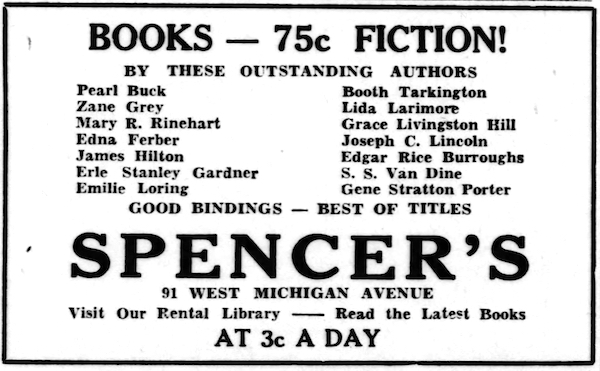

This is a 1939 ad from the Battle Creek (Michigan) Enquirer. Spencer’s sold used books and rented books at what seem to us now as incredibly cheap prices. Three cents a day to rent a book?
But remember when this was. The nation had just come through the Great Depression, and families were still getting their bearings. Instead of paying the original, $2.00 cover price for the latest Emilie Loring book, some waited for the latest, most popular titles to come to Spencer’s where prices weren’t quite so dear.
These lists feel a little like time capsules, and reading the books on them could be like traveling back in time. The ad featured the most popular authors, a Who’s Who of the 1939 bookshelves and their up-to-the-minute offerings:
Pearl Buck had already won a Pulitzer for The Good Earth. Her latest was The Patriot, a love story between a Chinese man and a Japanese woman whose countries are at war.
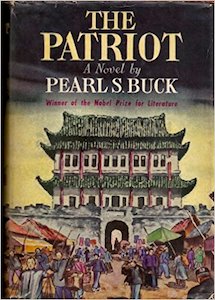
Zane Grey wrote dozens of westerns, nearly all of which became feature-length movies. Riders of the Purple Sage (1912) was an instant classic, and The Lone Star Ranger inspired “The Lone Ranger” TV series long after his death. In fact, Zane Grey died only months after this ad appeared in the paper, but like Emilie Loring, his publishing faucet kept running; more than thirty-five Zane Grey novels were published posthumously–and I’m going to go out on a limb here and guess that those weren’t all his creation. At the time of this ad, though, Western Union was his latest.
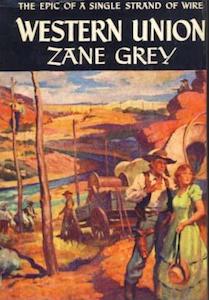
Mary Roberts Rinehart became famous with her very first mystery story, The Circular Staircase, in 1907. I’ve never read her 1930 story, The Door, but apparently “the butler did it” in that one, and there were so many copycat plots afterwards that she is given credit for the cliché, even though she didn’t write it. In 1939, she took a break from mysteries to write a nonfiction book that must have produced a chorus of “Amens” from her peers: Writing is Work. But visitors to Spencer’s probably looked for her 40th book, The Wall (1938).
Edna Ferber also took a leave from fiction that year. Her new book was an autobiography, A Peculiar Treasure, “the diary of a busy life” as a Jewish family in Appleton, Wisconsin. What stories of hers do you remember? I couldn’t think of a single title, off-hand, but how about these: Show Boat, Gigolo, Giant, American Beauty, and Personality Plus?
James Hilton created the vision of “Shangri-La” in Lost Horizon (1933) and wrote Goodbye, Mr. Chips the year after. Although he had no new title in 1939, Pocket Books chose Lost Horizon as its first soft-cover title, starting the paperback craze. I wonder how Spencer’s handled that. Lost Horizon inspired numerous films, and I smiled to notice that James Montgomery Flagg created its first, movie poster. (Remember? He created the “Uncle Sam Wants YOU” poster and also illustrated some of Emilie Loring’s stories.)
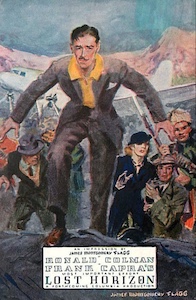
Erle Stanley Gardner introduced his Perry Mason series in 1933, and The Case of the Perjured Parrot was his fourteenth.
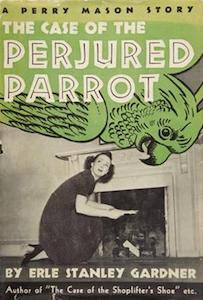
With two Pulitzers to his name, Booth Tarkington wrote what he wanted, and he, too, changed gears in 1939. Blind for almost a decade, he dictated “genial and discerning commentary” on seventeenth-century artworks, Some Old Portraits (1939).
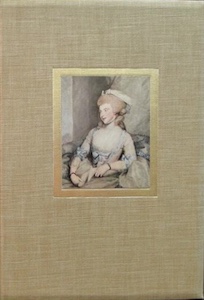
Lida Larrimore won Penn’s Prize Play award two years in a row–1927 and 1928, when Emilie Loring won fifth prize. A summer resident of Maine, her novel that year, Uncle Caleb’s Niece, told the story of a “charming” but “exasperating southern family” spending its vacation in New England.
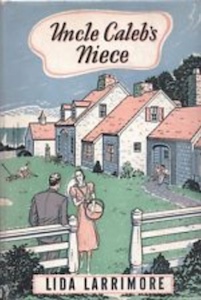
Grace Livingston Hill was well on her way to her hundredth novel. That year, she brought out The Seventh Hour, Stranger Within the Gates, and Aunt Crete’s Emancipation. How do you think she did it?
Joe Lincoln was a Cape Cod writer, and Ownley Inn (1939) was his fortieth book. It was a murder mystery with “the usual sprinkling of clam-bakes, old maids, crotchet-y boarders and simple servants,” all brought together in the wholesome, salt air of the Cape.
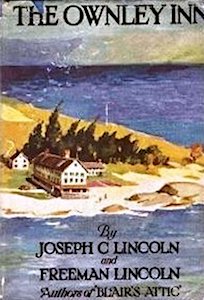
Edgar Rice Burroughs, of Tarzan fame, had two series in the go. Tarzan and the Forbidden City (1938) was followed by Carson of Venus (1939). If you can imagine it, the Venus series satirized Nazi Germany as it adventured across the wilds of planet Venus.
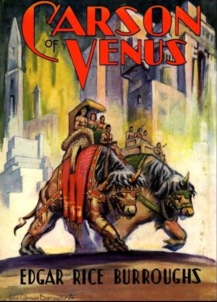
I’l admit I’d never heard of “S. S. Van Dine,” but then, neither had his parents. Van Dine was the pseudonym of Willard Huntington Wright who created the popular Philo Vance series, most of which were made into films. That year, he hit a false note by making the popular comedienne, Gracie Allen, the subject of his mystery. He died only months later, but Philo Vance still lives on.
Then comes the author and conservationist Gene Stratton Porter. She died fifteen years before this list, but her most famous books, Freckles (1904) and A Girl of the Limberlost (1909) made her a solid bet at Spencer’s. I can vouch for that. I still think of Freckles every time I see the word “glade” in print, and my sister has A Girl of the Limberlost fairly memorized.
And that brings us to Emilie Loring, whose Across the Years came out in 1939.
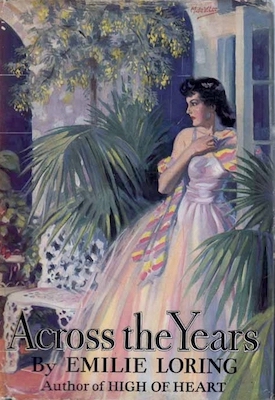
This was her eighteenth novel, and like the others, it was set in the time in which it was written. That distinguished her; the others set their stories in the past or in nebulous times. Hers recorded the rumbles of war in Europe, the struggle of Americans to know what their response should be, the reflections of World War I veterans who had prayed theirs would be the last conflict at such a scale.
I don’t know that it means much, but I found it interesting that these go-to authors ranged so widely in age. At thirty-eight and forty-two, James Hilton and Lida Larrimore were the youngest. Emilie Loring and Grace Livingston Hill topped the elder set at seventy-two and seventy-three, respectively. (Hill died in 1947; Emilie Loring wrote a dozen more years.)
Look at the company Emilie Loring kept, on booksellers’ lists and in stores. In 1939, these were the go-to, reliable-sales authors. Five years earlier, mid-Depression, here is another list, introduced:
“Here is a list of refreshing, up-to-the-minute novels chosen from among the best and most successful books of recent years. Many of the most popular authors in the entire field of fiction are represented here.”
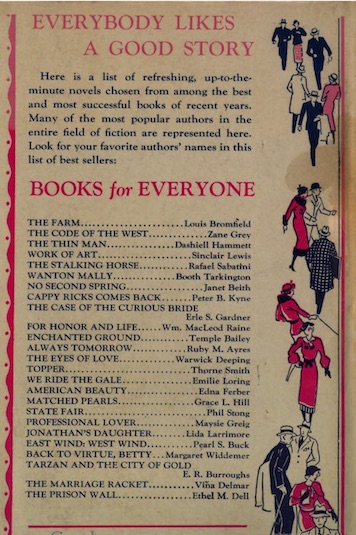
I don’t know how you get more mainstream than that.
I’m sure every generation has its go-forwards and its left-behinds. Do you wonder if you might like some of these other authors and books? How fun would it be to have a basket of them delivered for your holiday reading?
Give it a try. If it feels like immersive time travel, I won’t be surprised. Add lots of Emilie Loring!











Dear Patti, I’ve heard of and read several of these authors. Edna Ferber I found on my mother’s bookshelf (Saratoga Trunk which was also made into a film with Ingrid Bergman and Gary cooper). Some I have never heard of before like SS Van Dine or Lida Larrimore, but Im willing to give them a try!
LikeLiked by 1 person
Lida Larrimore seems to have had a sense of humor and a light touch in writing. I have only read her plays, but I’d like to try her novels. Let’s report back!
LikeLike